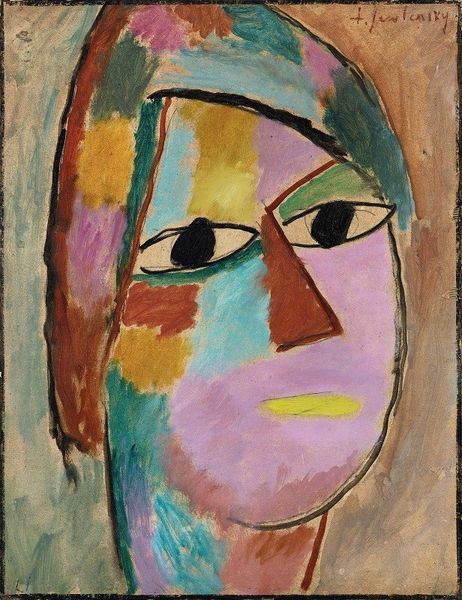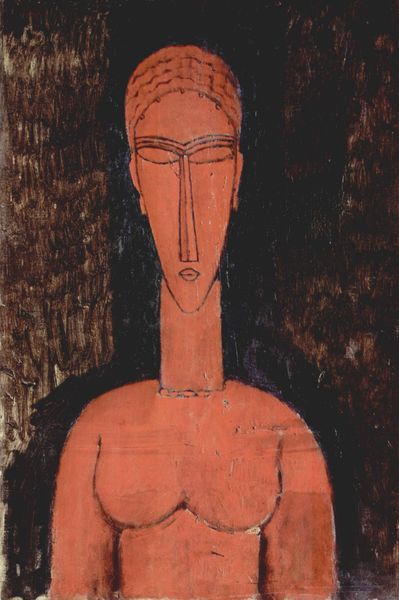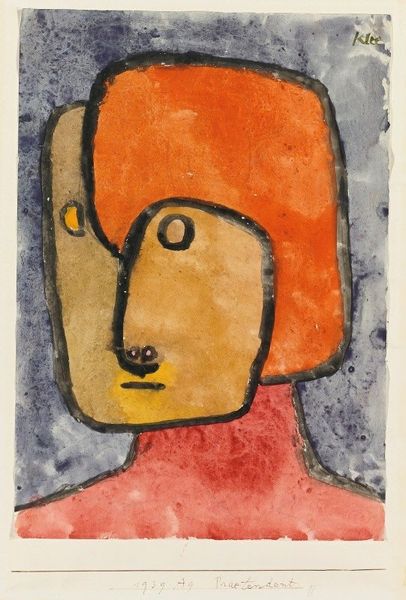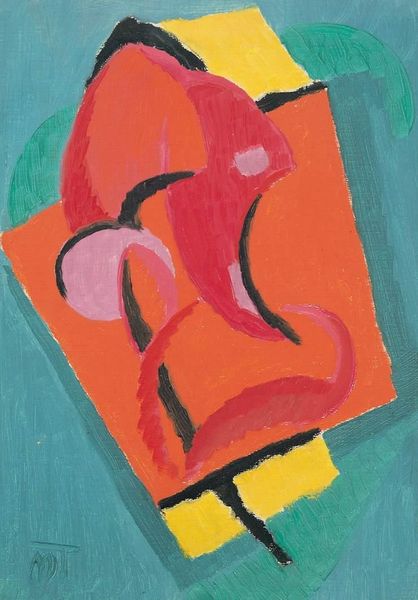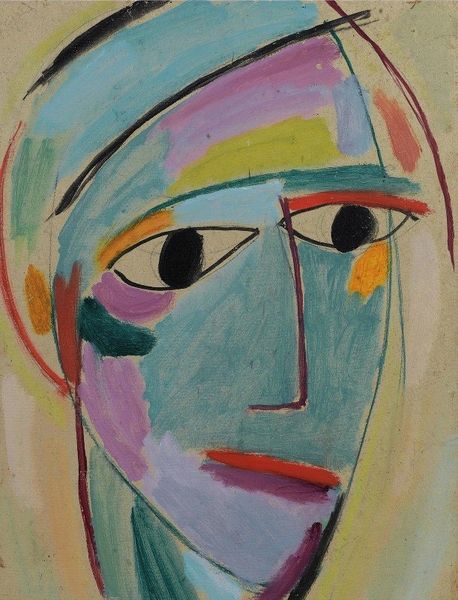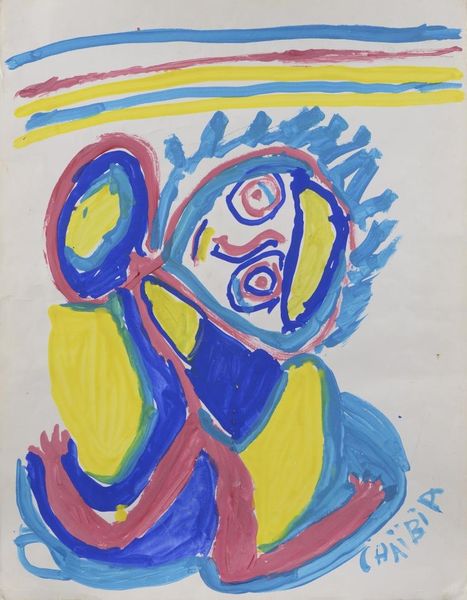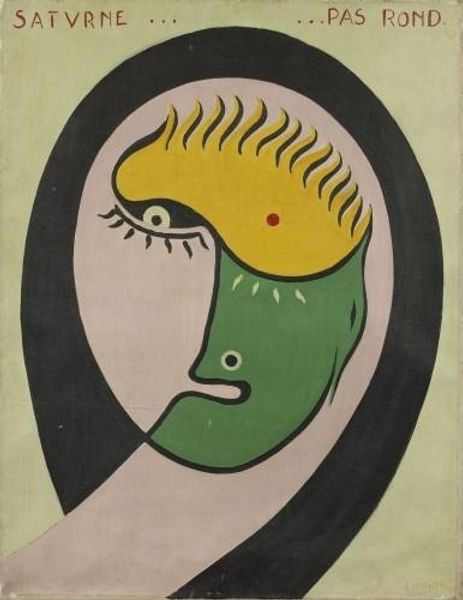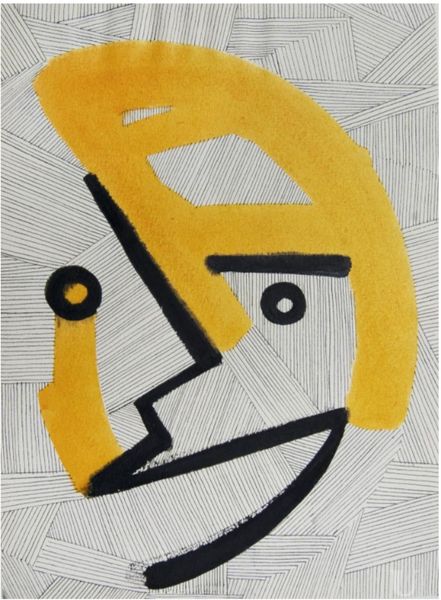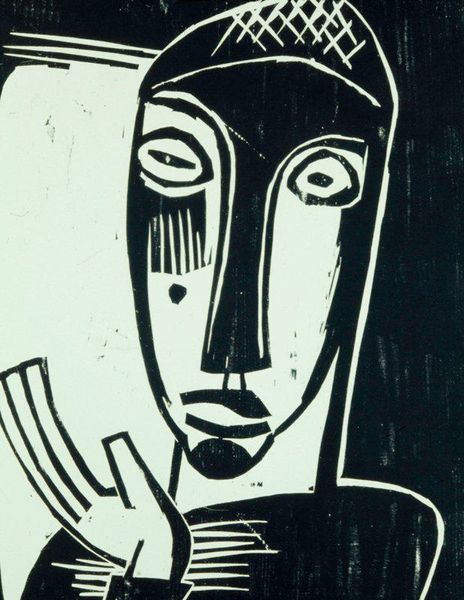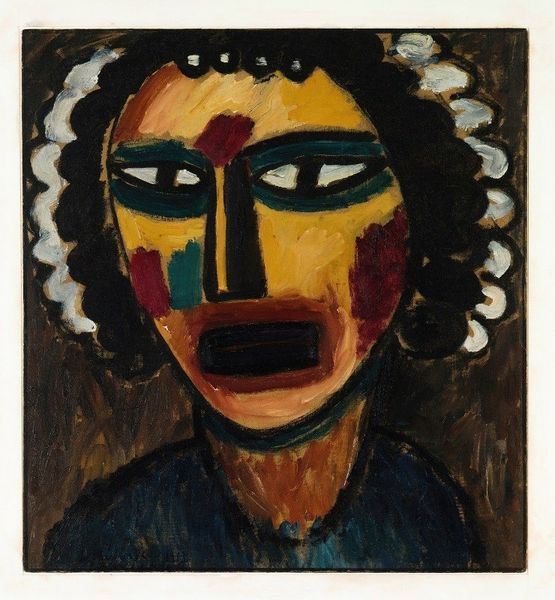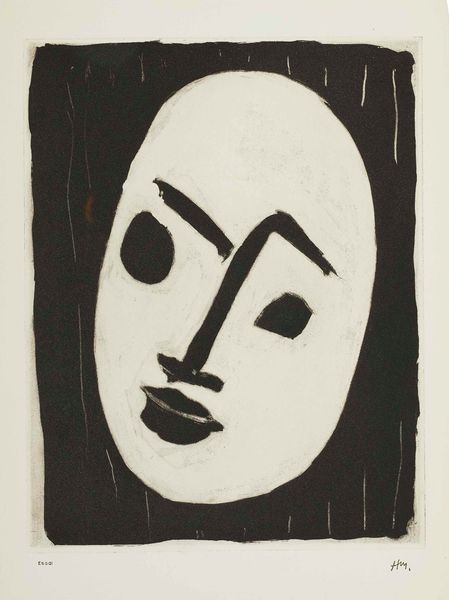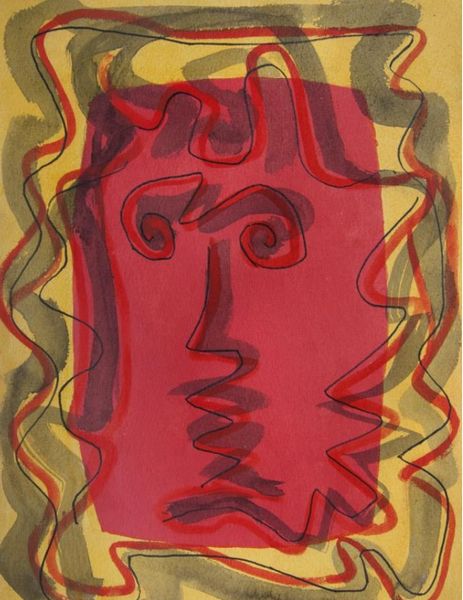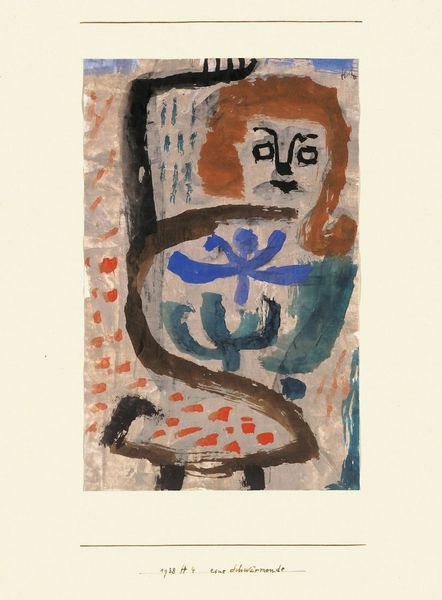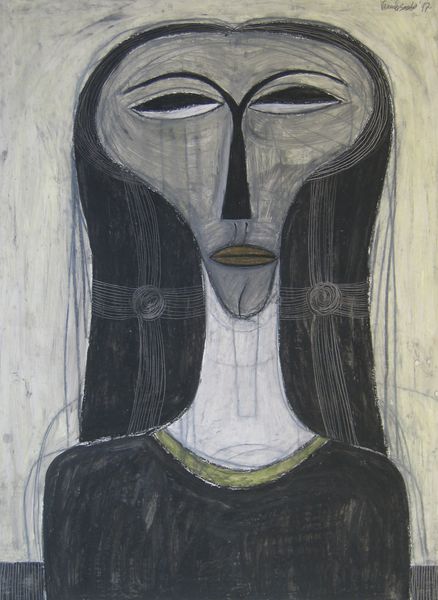
painting, oil-paint
#
portrait
#
painting
#
oil-paint
#
expressionism
#
naive art
#
abstraction
#
portrait art
#
modernism
Copyright: Victor Brauner,Fair Use
Editor: Here we have Victor Brauner’s "Jardiniers," a small oil painting on canvas. The figure is composed of blocks of green, yellow, and blue against a stark black background. There's a striking, almost unsettling simplicity to the composition. What do you see when you look at this piece? Curator: The geometry of the forms, however rudimentary, immediately seizes my attention. Notice how the artist has deployed color, not to represent reality, but to construct it. The interplay of these hues shapes the figure; do you agree? Editor: Yes, it’s as if the color itself defines the subject. It's fascinating how simplified the forms are. Curator: Precisely. This reductive approach draws us to the fundamental aspects of painting: line, color, shape. The absence of modeling is critical. How does this flatness affect your perception of space within the image? Editor: It flattens everything, of course. It seems to push the figure forward, right up against the picture plane. I was wondering, how much of this is deliberate versus accidental or the result of “naive art?” Curator: We cannot ascribe this construction solely to accident or naiveté, the structural integrity of this representation betrays it. These decisions, however unconventional, contribute to a visual vocabulary that expresses something beyond mere depiction. Editor: So, the unusual color palette, and the flattened perspective, all build to this expression, like a statement by Brauner? Curator: Indeed. Brauner gives us an insight into pure visual language. This approach underscores the very act of seeing and representing. Editor: That's really interesting! I didn’t notice how carefully the colors build this form. Curator: Close analysis enables you to "read" art's visual language with intention.
Comments
No comments
Be the first to comment and join the conversation on the ultimate creative platform.
